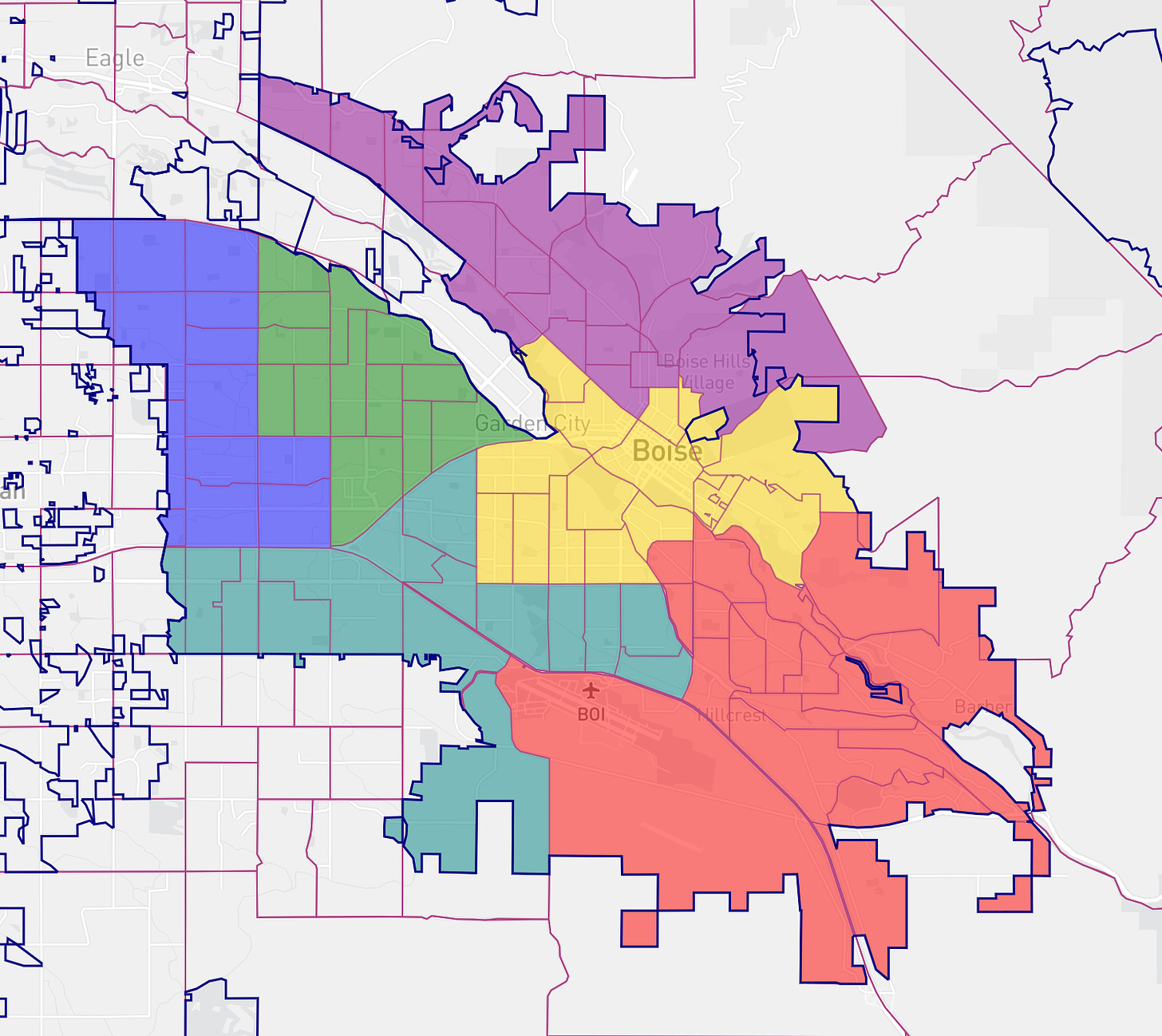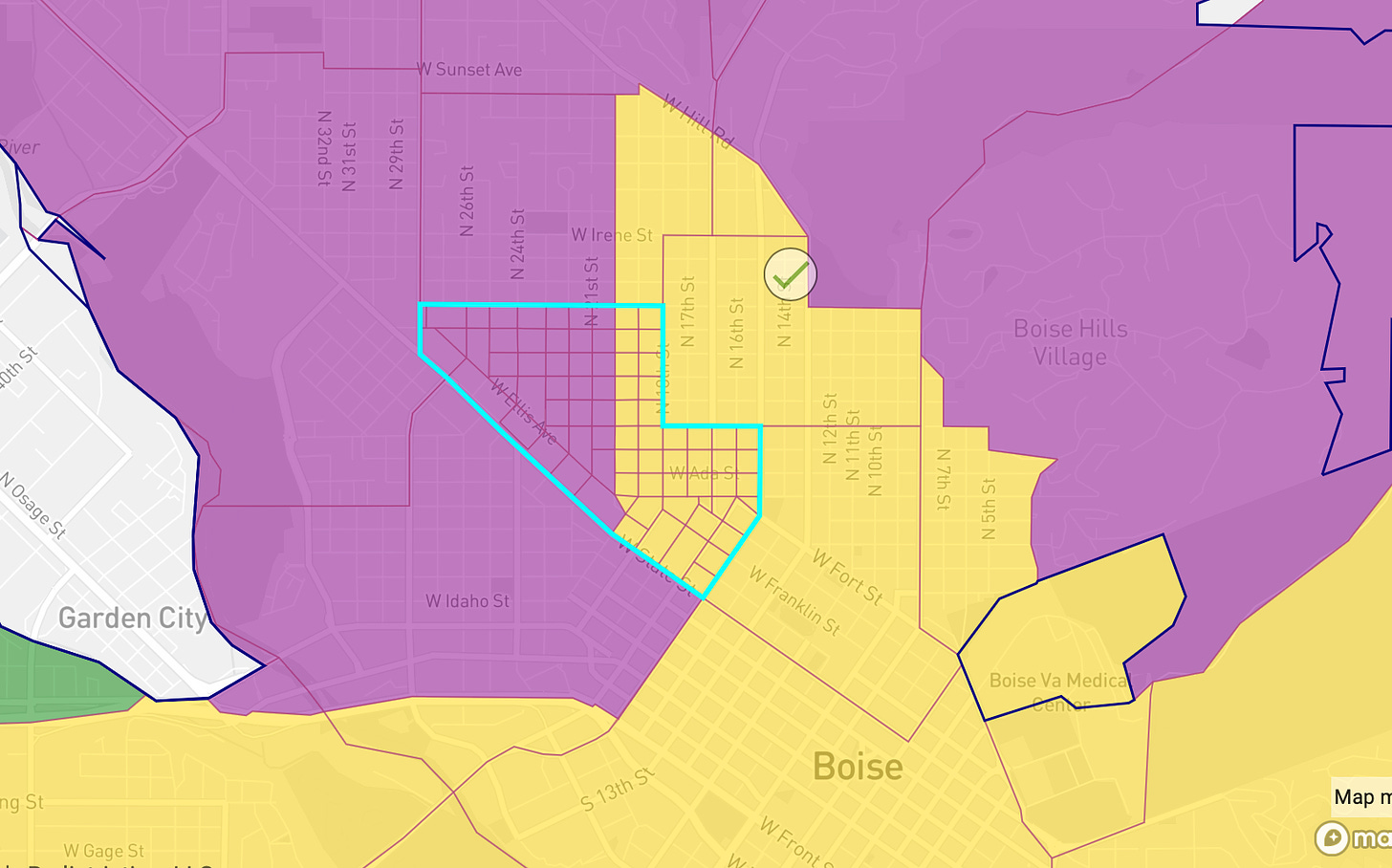Last week, the City of Boise proposed and since approved the new City Council districts.
One of the things that first jumped out at me, was the North End was the only neighborhood to be split into two different districts.
I have to confess, given the imbalance of power that has reigned in Boise, I was a big suspicious and skeptical.
Luckily, thanks to Daves Redistricting App (the name is dump, but the app is awesome), I was able to duplicate and analyze the districts, and even attempt to draw my own.
Perhaps the only change I would have made to the proposed districts would be to put the West End and West Downtown neighborhoods in with North West Boise, and then split the North End at 20th Street up to Hill, but this wouldn’t really change anything.
(My proposed district changes)
The fact is, given the borders and shape of Boise, along with the low population density of North West Boise, there really isn’t any other options.
The fact is, the consultant that the City hired, did a pretty good job.
Some take aways from my analysis.
The rural North West of Boise just doesn’t have the population to justify having their own district, and given that Boise has grown so much in other parts of the city, it will be even worse in 2023 when the 2020 census data is taken into account. If the North West wants to have representation, they need more people. Maintaining the rural nature and big lots is a key issue with the North West, so the only suggestions I can see is to significantly increase density along State Street (I support) or two possibly annex Hidden Springs (I don ‘t even know if this is possible)
The real winners in the geographical districts are West Boise (south of Garden City). Because of its sheer size and the number of households, they end up with three representatives. This is really going to change the dynamics of the City Council in the future. This area is more conservative leaning, even though only the furthest west district has a (slight) republican majority.
The bench looses a little like the North West. The North Bench gets merged in with downtown and the core of the North End, whereas the South Bench gets lumped in with South West Boise.
The North End is going to be able to hold on to power until at least 2023, but after that, their vote gets diluted. The North Ends still will have a high turnout, but given the more local election dynamics, they could be drowned out by other constituents.
National Politics only loosely mirrors City Issues. Zoning, density and growth are the key battles of Boise, along with Property Taxes.
The battle over the Interfaith Sanctuary Shelter could possibly have a big effect on District 3 election in 2023. Pissed off people are motivated to vote. Even though the District leans Democratic and Progressive, a backlash to any issues with homelessness added to the resistance to zoning changes could drive that District more NIMBY.
Getting the zoning code rewritten has to be a priority right now for the current city council.
Anyway, if you are tech savvy you can copy my maps linked above and play around with them yourselves. The data is unbelieveably detailed with demographics and voting, though I wish it included income and poverty as well.




